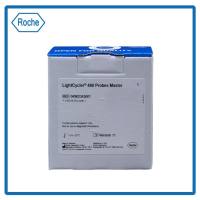cRNA Probes: Comparison of Isotopic and Nonisotopic Detection Methods
互联网
805
Since the first description of the technique of in situ hybridization to detect specific mRNA species on tissue sections, a variety of methods have been employed. Preparation of tissue and cells ranges from the use of frozen sections, which show good preservation of mRNA but poor morphology, to standard histological methods for tissue preservation, such as paraformaldehyde fixation followed by paraffin embedding. This latter method may show reduced preservation of tissue mRNA levels, but gives more useful structural information as the tissue morphology is better preserved. Similarly, a variety of probe types have been used, starting with double-stranded cDNA probes and moving onto single-stranded RNA probes (riboprobes). In addition, short, single-stranded oligonucleotide probes have also been used, allowing the user to synthesize specific probes from published sequences. Lastly, various methods of probe labeling and detection have been used, including different radioactive isotopes and, more recently, nonradioactive methods such as biotin, fluorescein, and digoxigenin (DIG). For examples of applications of these methods in various tissues see refs. 1 -10 .









